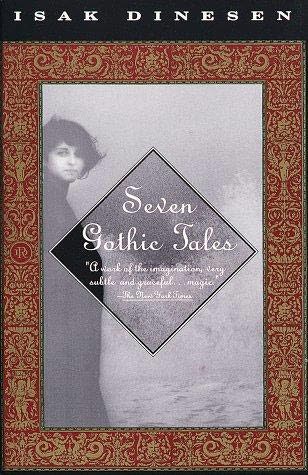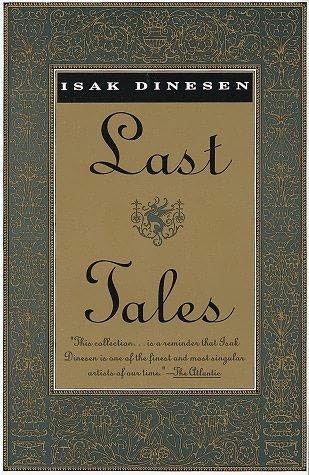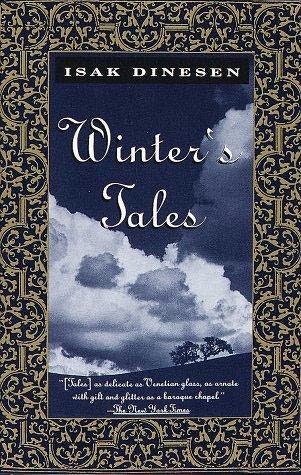Isak Dinesen,was a famous Danish writer who was born in Rungsted.She has a pseudonym of Baroness Karen Christence Blixen-Finecke, nee Dinesen. She was born on 17th april,1885 in Rungsted, Zealand, Denmark .

Even from her early life she started studied painting in different European cities. She married her cousin, Baron Bror Blixen-Finecke,in the year 1914 and afer that went to live in Kenya , which was that time called as British East Africa, on a coffee plantation.The image below is her museum in Kenya.

She got divorced with her husband in the year 1921, but this doesnt stop her from staying in Africa as she remained in Africa till 1931.In 1931 sfe left Africa and returned to Denmark after 17 years.The image belows shows the house of Isak Dinesen, wher eshe lived in Africa

She was a very good writer and her first book of stories was "Seven Gothic Tales" which was published in the year 1934.This book mainly dealt in highly polished and subtle prose with the world of the supernatural and most of her later novels were also based on supernatural based.The image below shows the front cover of her book "Seven Gothic Tales"

In 1937 she finished another famous work called "Out of Africa",and it was very popular to an extent that it was made into a movie and got released in 1985.This film out of Africa was based on her experiences on the plantation, during her visit to Africa.This film evenyually won 7 Oscar awards.The image below on the left shows the Novel "Out of Africa" and the image on the films is the film released in 1985.

The only novel which was published under the name Pierre Andrezel is "The Angelic Avengers" which was published in the year 1944, which was later translated in English in 1947.In this novel she describes in allegorical terms the plight of Denmark during the German occupation in World War II.The image belows shows the front cover of her novel "The Angelic Avengers"

Apart from these works the later work Dinesen includes
i)Winter's Tales in 1943
ii)Last Tales in 1957


These two works are the collection of stories, which was based on the supernatural theme
She live in Africa for about 17 years and another novel whic sketches the life of Africa is the "Shadows on the Grass" which was pubilse in the year 1960.Yhe image below shows the fron cover of this novel.

The most important part of her work is that whic earned her lot of fans is that she wrote both the Danish version and the English version of all her works Isak Dinesen died on 7th September 1962 at Rungstedlund,Denmark in her family's estate, at the age of 77, and reports says she died of malnutrition.The image below is her grave in Rungstedlund, Denmark.

Jay Leno,is an american comedian and also a famous television talk-show host.He is noted mainly for his gently satirizing the mores and products of United States consumer culture. Apart from this Leno is also famous, for his passion for performing before live audiences.

He was born in 1950(April 18) as James Douglas Muir Leno in New Rochelle, New York.He was raised in Andover, Massachusetts.Jay Leno finished his studies at Emerson College.It was in mid 1970's,after finishing his studies Jay started his career in entertainment field as a stand-up comedian.He performed his routines as many as 300 times in a year in the nightclubs and also in the shopping malls.
As this got a great exposure for him, Leno soon began working in the television industry.He started his Television industry as a writer for American actor Jimmie Walker, who was then featured in the opular situation comedy called “Good Times.” I
t was in 1977, Leno first performed on the “Tonight Show,” a National Broadcasting Company (NBC) talk show which was then hosted by American entertainer Johnny Carson.The important turing point for Leno, which made him a national celebrity was the Talk Show called as “Late Night with David Letterman”.

Carson named Leno as one of several permanent guest hosts on the “Tonight Show"in the year 1986.1986 was a very good year for him as he produced and starred in special programs for NBC and the cable television network Showtime, during that year.

Apart from these activities he also performed more than 200 shows in comedy clubs and Las Vegas casinos, and he had a sold-out engagement at New York City's prestigious Carnegie Hall."Tonight Show" is the show which made Leno so popular and he wasnamed the exclusive guest host in 1987.In 1992, he became the permanent host when Carson retired.The picture below shows Jay Leno with American President Barrack Obama in Tonight Show

Apart from the TV shows, Leno also appeared in the motion pictures.Some of the motion pictures includes
1)Fun with Dick and Jane (1977)
2)American Hot Wax (1978)
3)The Silver Bears (1978)
4)Americathon (1979)
5)Collision Course (1988)
6)Dave (1993).
He also compiled four editions of Headlines between 1989 and 1992, from a popular recurring segment on the “Tonight Show,” as well as Police Blotter in 1994, all best-selling books which contains the collections of humorous newspaper headlines and articles.
Chanakya is a legendary and historical name in India. He is the greatest of the diplomats of all times. The name 'Chanakya' is associated with shrewdness, statemanship and the art of political administration. By his political shrewdness and politics of expediency, he founded the mighty Mauryan empire in India. He was an expert in economics, diplomacy and political administration. He was extremely well read, determined in his policies and principles and foresighted. He was an 'acharya' or a teacher of political science at the world famous Takshashila University and later became the guru of Samrat Chandragupta Maurya.

Chanakya was born in an impoverished brahman household of Pataliputra in Magadh or the modern state of Bihar in 350 BC and lived till 275 BC. While his real name was Vishnugupta, he was also famous as 'Kautilya' because of his 'kutila niti' or the cunning art of diplomacy. At a very early age Chanakya started studying Vedas. The Vedas, believed to be the most difficult scriptures to study were completely studied and memorized by him in his early childhood. His father Rishi Chanak who was an acharya himself, understood the importance of higher education and sent his son to Takshashila in Gandhaar. Today it is called Rawalpindi, a part of Pakistan. During the ancient times, Takshashila was the epicentre of higher education. It contained more than ten thousand scholars at a time and offered courses stretching over a period in excess of eight years. The scholars were inducted after completing studies in their respective countries. They opted for optional topics for in-depth research in specialized domains. Those who graduated from the university, were acknowledged as the greatest learners of their times. Takshashila was the adjunction where individuals of contrasting originations and citizenty commixed with one another and exchanged the knowledge and wisdom of their countries. At a time when the Dark Age was predominating in the west, the existence of Takshashila made India stand distinct and way forwards the western lands of Europe which contended with 'ignorance' and 'total information blackout'. However, for the India Takshashila was the light of advanced cognition and pride.
Chanakya has been portrayed multifariously, as a saint, as a merciless administrator , as the king-maker , a committed nationalist, an altruistic abstainer as well as a person missing all ethical values. His monumental life reminds us of an unforgiving saga where the person is possessed by the thought of taking revenge. But in reality, personal revenge was not his objective. He cherished the idea that his country should be secure and the governance should go along smoothly, adding happiness to the lives of the people. In his personal life, Chanakya was said to be an unselfish human being who only worked for the welfare of the king, kingdom and the people. He lived an ascetic life even though he was very close to Samrat Chandragupta Maurya. As he was the king-maker, he could have enjoyed the luxury and comforts of royal life. But he chose the other way and remained committed to the simple and strict principles of his life. He lived in a small hut near Chandragupta's palace and guided him at every step. Many a time, he has been compared to personalities like Machiavelli, Aristotle and Plato, illustrating his capability and authoritative position. He has also been praised for his intense political wisdom. Two thousand years ago, this man walked the earth in the pursuit of truth, without any shift and without any fear. Much before Clausewitz quoted that 'War is only the continuance of state policy by other means', Chanakya had already scripted it in his book 'Chanakyaniti'. The thoughts of this remarkable man were so foresightful that they seemed to be prophesies.
Legend has it that there was a ruler in the kingdom of Magadh called Dhanananda. He ruled from Patliputra the capital of Magadh. He was dishonest and inhuman by nature. He was constantly engaged in accumulating wealth without conceiving of the outcomes. The people disliked him as he collected taxes extortionately. People were outraged by the tax policy which which stipulated a levy on unwanted matters. The motive of such illegitimate levy was to attend to the self-serving concerns of the ruler. There were taxes on everything, on hides, on wood and even on stone. The measure of wealth which Dhanananda had was inconceivable. Chanakya strongly opposed this injustice. He said, taxation should not be harsh to the people. Mildness and care should be there while setting the tax structure. The government should collect tax like a honeybee, which takes just the right measure of nectar from the flower so that both can co-exist. This made the ruler unhappy and displeased with him. Once he was invited to the court of Dhanananda and suffered great humiliation there. Chanakya took a vow to bring down the Nanda dynasty. With the help of a brave and capable general, Chandragupta, who had mastered the art of warfare and governance, he succeeded in accomplishing his ambition and founded the Mauryan dynasty in Magadh. Chandragupta became the ruler of Magadh empire and became famous as 'Samrat Chandragupta Maurya' all over the world. However, before overcoming Dhanananda, Chanakya had to utilise several plans in order to defeat him. He first of all tried out the policy of invading the heart of the city. The policy failed again and again. With the modification in plan, Chanakya and Chandragupta commenced assaults on the borderlines of Magadh. Once again there were misapprehensions. The troops were not posted in the captured regions and once they advanced, the people of the captured regions linked up unitedly and capsulated their army as a result those who had already been overcome had to be fought again. The ingenious Chanakya understood the errors they were making and proposed to position troops in the captured areas so that the opponents would not retaliate and cause any problem. Chanakya with his smartness and diplomacy gained the friendship of Raja Parvataka, also acknowledged as Porus II. Parvataka, along with his brother Vairochaka and son Malayeketu followed with their troops to reinforce them. Dhanananda also had the support of a sizeable force as well as the guidance of his very capable minister called Amatya. Chanakya knew it well that getting Amatya down-and-out was the only means of defeating Dhanananda. Accordingly, he contrived a plan of implanting a spy in the opposition camp to know their weaknesses. Finally, Chanakya succeeded in his efforts to bring down the Nanda dynasty. Dhanananda was killed and his sons and relatives also perished in the war. Chandragupta was triumphant which proved the capabilities and foresight of Chanakya. Everyone related to Dhanananda was also killed because Chanakya did not want any claimants to the throne in the future. He made sure that the bloodline of the Nanda dynasty should be completely wiped out, not because of his personal grudge but because of the well-being of the state. Chanakya once told Chandragupta that the weed or the unwanted grass must not be just cut at the ground level and thrown out, but must be pulled out along with its root so that it may not grow again. Just like this act, an enemy must be defeated and destroyed in full so that he may not raise his head again.

Again, with the help of Chandragupta Maurya, Chanakya expelled the troops of Alexander from India. The most prominent of the historical events of those times occurred right under the eyes of Chanakya and Chandragupta Maurya. The Greeks headed by Alexander and the numerous other invaders who devastated the subcontinent for decades were conquered and silenced by Chandragupta to a great extent. Once, it so happened that Chandragupta met Alexander. By nature, he was just like his guru Chanakya. His bold and arrogant demeanor infuriated Alexander which resulted in his arrest. That was the juncture when Chandragupta tasted the realistic aspect of a gruesome war. While Chandragupta was busy fighting the outlanders Chanakya closely followed their movements and strategies. He turned conscious of the weaknesses of Alexander as well as other Indian rulers. Chandragupta who by the guidance of his guru, had matured into a intelligent military commander, did not make a single mistake and kept winning battle after battle. The fundamental source of strength for Chandragupta and his army was the mind-power and the predominating personality of his guru Chanakya. In the battle of independence for India from the Greek invaders, Chandragupta played the vital role, while the brain behind it was Chanakya. Due to repeated assaults by Chandragupta, the 'Satraps' or the generals of Alexander became weak and gradually his prowess deteriorated. The death of formidable Satraps like Niccosar and Philip shrivelled Alexander like never before. After the death of Alexander in Babylon, all his Satraps were either killed or repositioned. The deputies of Alexander distributed his empire within themselves in a settlement. The settlement clearly mentioned, 'no realm east of the Indus', meaning, there was no land for them in the eastern region of Indus or river Sindhu. This was how India was relinquished from the Greek dominion and the pillars of the mighty Mauryan empire were raised. In this great endeanour, the role of Chanakya was instrumental as he was the man who united 'Bharat-Varsh' under the rule of Samrat Chandragupta Maurya. .
Three great literary works namely, 'Artha Shastra', 'Niti Shastra' and 'Chanakya Niti' are attributed to Chanakya. These books have been written in Sanskrit language. Arthashastra, which literally means, 'the science of material gain' is the classical Indian treatise on the art of administration and economics. It is said to be the first systematic book on economics. It talks about monetary and fiscal policies, well-being of the state, international relations, and war strategies in great detail. Chanakya is also the author of 'Niti Sastra', which lays down the principles of immaculate living and paints a thorough picture of the state of affairs at that time. Many of his 'nitis' or principles have been compiled under the book titled 'Chanakya Niti' which talks about the ideal way of living, and demonstrates Chanakya's in-depth knowledge of the Indian way of life.
When Chanakya established the Mauryan empire, he made Chandragupta the ruler and served him as his friend philosopher and guide. In order to forbid him from being envenomed by his enemies, he began adding small amounts of poison in the food that Chandragupta took so that he would get used to it. One unfortunate day, rani Durdha, the wife of Chandragupta shared the food with him. She was pregnant at that time and since she was not habituated to consuming poisoned food, she died. Chanakya made up his mind that the baby should survive. He cut open the belly of the queen and took out the baby, thus saving his life. A bindu or a small drop of poison had gone to the baby's head, for that reason, Chanakya named him Bindusara. Bindusara grew up to become a great king and the father of Samrat Asoka, the greatest of all rulers of the Mauryan dynasty. When Bindusara became an adult, Chandragupta abdicated the throne and the pleasures of the material world, took a begging bowl and walked to Deccan along with a Jain saint called Bhadrabahu. Even now there is a cave with a carving of a stone foot, where Samrat Chandragupta Maurya is believed to have taken 'samadhi' or starved to death as per the Jain traditions. The place is known as Sravana Belagola which presently is in the state of Karnataka. Chanakya however, continued his selfless service to Samrat Bindusara, the kingdom of Magadh and its people.
The way Chanakya's life came to an end is unspeakable. Samrat Bindusara had a minister called Subandhu who did not like Chanakya. One day he disclosed the fact to Bindusara that Chanakya was responsible for the death of his mother. Nurses present at the time of death also confirmed this fact. This made him very angry about the whole incident. When Chanakya came to know that Bindusara was angry with him, he conceived that he had nothing to lose but his life. The man knew no fear and was unafraid of death, disgrace or defeat. He gave away whatever he had to the poor, widows and orphans and sat on the 'chita' or dung heap, to end his life by abstinence from food and water. When Bindusara became aware of the full account of his birth, he begged forgiveness of Chanakya. But Chanakya was determined. Bindusara felt sorry for him and released all his anger on Subandhu, who assured to bring Chanakya back and asked for time. Subandhu still hated Chanakya and thus, made sure that he did not come back to Patliputra. As part of a plan to kill him, he organized a ceremony in his honor, but unnoted by anyone, he slipped a burning charcoal ember into the dung heap on which Chanakya was sitting. Aided by the wind, the dung heap caught fire, and the founder of the mighty Mauryan empire was burned to death.
The man was virtuous, and thus free from anxiety, wise, and thus free from perplexity, brave, and thus free from fear. His main philosophy was, 'a debt should be paid off till the last penny and an enemy should be wiped out without a trace'. He lived and died by his philosopy.
Who is François Quesnay?

Abou his early life....
His famous works
Tableau Economique

His death
Who was Richard Cantillon ?
Richard Cantillon ,was an Irish merchant(But he had a Spanish name, and lived in France) and he also a famous economist who is known for his significant contributions, to the study of political economy,to be specific internation Political Economy.

Early life and Fame
Many historians gave him the credit as the first great economic "theorist".The early life of Cantillon is not well known by the hitorians but many information reveals that he gained huge wealth as a merchant in London and then as a banker in Paris and during his death he was living in London
Great Economist
Cantillon is best known for his Essay on the Nature of Trade in General and unfortunately it was published only after his death in 1755.It was aroun in 1880 his work was popularized by British economist named,William Stanley Jevons,and he called it the
“cradle of political economy”
as he was able to deal the political economy, in a systematic way.
Explaination in his book?
The first part his book defines wealth,and it narrows the elements of land and labor. It also states that the time, expense, and difficulty of learning a type of work, combined with the risk involved in the work, and the capacity and responsibility required of the worker, account for the variations in wages.Basically Cantillon's book discussed topics such as Barter
1)Market prices
2)Circulation of money in amount and rapidity Credit
3)Interest and its causes
4)The rise and fall of interest rates Foreign trade
5)Banking
Theory of Wages
Nations Eealth - Currency or Land
He also stated that Nations wealth is not really dependent on currency but he was brave enough to argue that land was the source of wealth and this postulate was the aslo basis of the Physiocratic doctrines,which was upheld by François Quesnay, founder of the Physiocratic school.
Income returned by Land
Cantillon argued that land returned three kinds of income and this includes
2)Next the profits of the operator
3)and third the owner.
He also explained that nonagricultural enterprises did not offer any equivalent to the third kind of income.He had wider vision about the
future and the reason for this is his treatment of some subjects clearly anticipated later ideas, such as the theory of population, which was set forth by Thomas Robert Malthus at the end of the 18th century.
Cantillon ideas
Cantillon also wrote that
'Men multiply like mice in a barn, if they have the means of subsistence without limit; and the English in the colonies became proportionally more numerous in three generations than they would in England in thirty; because in the colonies they find new lands to cultivate.'
More Articles …
Page 14 of 18
